Jingwen Ye
Semantic Surgery: Zero-Shot Concept Erasure in Diffusion Models
Oct 26, 2025Abstract:Concept erasure in text-to-image diffusion models is crucial for mitigating harmful content, yet existing methods often compromise generative quality. We introduce Semantic Surgery, a novel training-free, zero-shot framework for concept erasure that operates directly on text embeddings before the diffusion process. It dynamically estimates the presence of target concepts in a prompt and performs a calibrated vector subtraction to neutralize their influence at the source, enhancing both erasure completeness and locality. The framework includes a Co-Occurrence Encoding module for robust multi-concept erasure and a visual feedback loop to address latent concept persistence. As a training-free method, Semantic Surgery adapts dynamically to each prompt, ensuring precise interventions. Extensive experiments on object, explicit content, artistic style, and multi-celebrity erasure tasks show our method significantly outperforms state-of-the-art approaches. We achieve superior completeness and robustness while preserving locality and image quality (e.g., 93.58 H-score in object erasure, reducing explicit content to just 1 instance, and 8.09 H_a in style erasure with no quality degradation). This robustness also allows our framework to function as a built-in threat detection system, offering a practical solution for safer text-to-image generation.
PrimitiveAnything: Human-Crafted 3D Primitive Assembly Generation with Auto-Regressive Transformer
May 07, 2025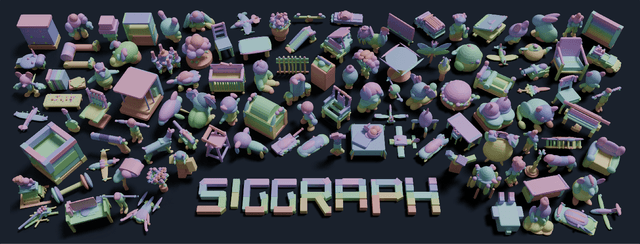



Abstract:Shape primitive abstraction, which decomposes complex 3D shapes into simple geometric elements, plays a crucial role in human visual cognition and has broad applications in computer vision and graphics. While recent advances in 3D content generation have shown remarkable progress, existing primitive abstraction methods either rely on geometric optimization with limited semantic understanding or learn from small-scale, category-specific datasets, struggling to generalize across diverse shape categories. We present PrimitiveAnything, a novel framework that reformulates shape primitive abstraction as a primitive assembly generation task. PrimitiveAnything includes a shape-conditioned primitive transformer for auto-regressive generation and an ambiguity-free parameterization scheme to represent multiple types of primitives in a unified manner. The proposed framework directly learns the process of primitive assembly from large-scale human-crafted abstractions, enabling it to capture how humans decompose complex shapes into primitive elements. Through extensive experiments, we demonstrate that PrimitiveAnything can generate high-quality primitive assemblies that better align with human perception while maintaining geometric fidelity across diverse shape categories. It benefits various 3D applications and shows potential for enabling primitive-based user-generated content (UGC) in games. Project page: https://primitiveanything.github.io
Reinforced Model Merging
Mar 27, 2025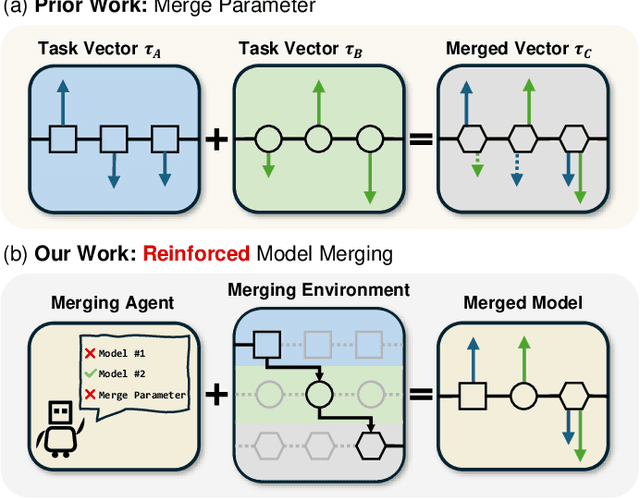
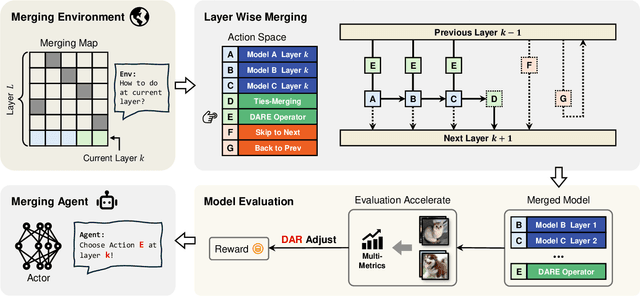
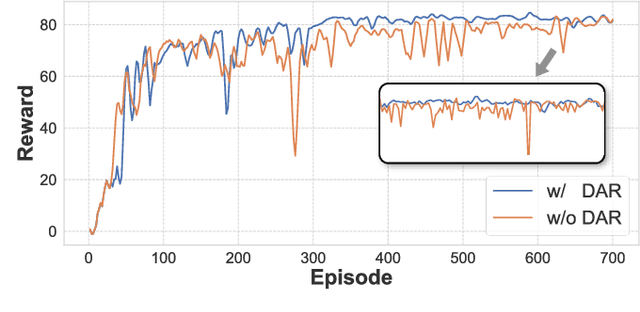

Abstract:The success of large language models has garnered widespread attention for model merging techniques, especially training-free methods which combine model capabilities within the parameter space. However, two challenges remain: (1) uniform treatment of all parameters leads to performance degradation; (2) search-based algorithms are often inefficient. In this paper, we present an innovative framework termed Reinforced Model Merging (RMM), which encompasses an environment and agent tailored for merging tasks. These components interact to execute layer-wise merging actions, aiming to search the optimal merging architecture. Notably, RMM operates without any gradient computations on the original models, rendering it feasible for edge devices. Furthermore, by utilizing data subsets during the evaluation process, we addressed the bottleneck in the reward feedback phase, thereby accelerating RMM by up to 100 times. Extensive experiments demonstrate that RMM achieves state-of-the-art performance across various vision and NLP datasets and effectively overcomes the limitations of the existing baseline methods. Our code is available at https://github.com/WuDiHJQ/Reinforced-Model-Merging.
Adversarial Training: A Survey
Oct 19, 2024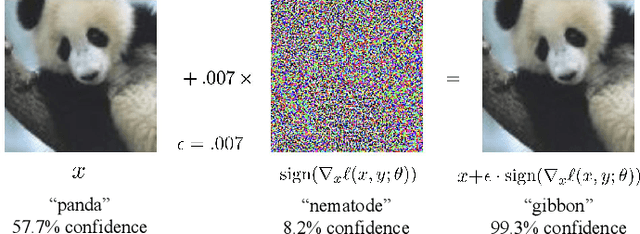
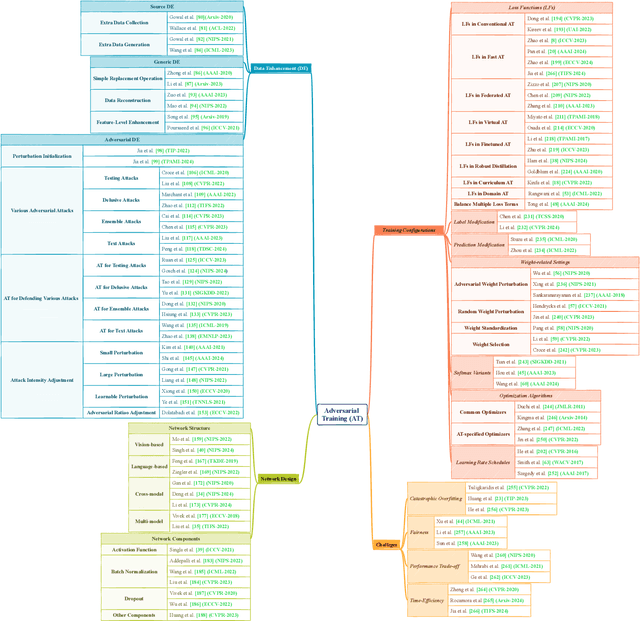
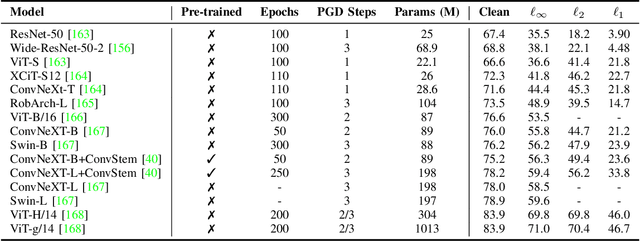
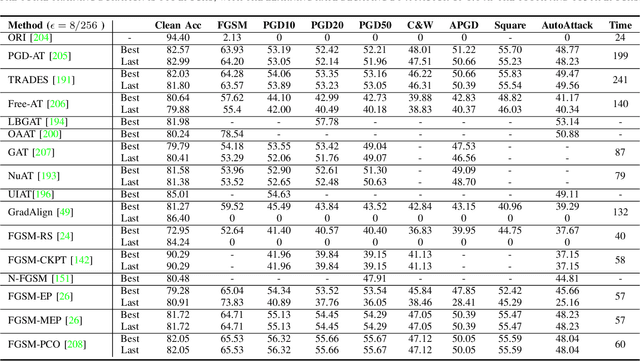
Abstract:Adversarial training (AT) refers to integrating adversarial examples -- inputs altered with imperceptible perturbations that can significantly impact model predictions -- into the training process. Recent studies have demonstrated the effectiveness of AT in improving the robustness of deep neural networks against diverse adversarial attacks. However, a comprehensive overview of these developments is still missing. This survey addresses this gap by reviewing a broad range of recent and representative studies. Specifically, we first describe the implementation procedures and practical applications of AT, followed by a comprehensive review of AT techniques from three perspectives: data enhancement, network design, and training configurations. Lastly, we discuss common challenges in AT and propose several promising directions for future research.
Teddy: Efficient Large-Scale Dataset Distillation via Taylor-Approximated Matching
Oct 10, 2024Abstract:Dataset distillation or condensation refers to compressing a large-scale dataset into a much smaller one, enabling models trained on this synthetic dataset to generalize effectively on real data. Tackling this challenge, as defined, relies on a bi-level optimization algorithm: a novel model is trained in each iteration within a nested loop, with gradients propagated through an unrolled computation graph. However, this approach incurs high memory and time complexity, posing difficulties in scaling up to large datasets such as ImageNet. Addressing these concerns, this paper introduces Teddy, a Taylor-approximated dataset distillation framework designed to handle large-scale dataset and enhance efficiency. On the one hand, backed up by theoretical analysis, we propose a memory-efficient approximation derived from Taylor expansion, which transforms the original form dependent on multi-step gradients to a first-order one. On the other hand, rather than repeatedly training a novel model in each iteration, we unveil that employing a pre-cached pool of weak models, which can be generated from a single base model, enhances both time efficiency and performance concurrently, particularly when dealing with large-scale datasets. Extensive experiments demonstrate that the proposed Teddy attains state-of-the-art efficiency and performance on the Tiny-ImageNet and original-sized ImageNet-1K dataset, notably surpassing prior methods by up to 12.8%, while reducing 46.6% runtime. Our code will be available at https://github.com/Lexie-YU/Teddy.
Heavy Labels Out! Dataset Distillation with Label Space Lightening
Aug 15, 2024


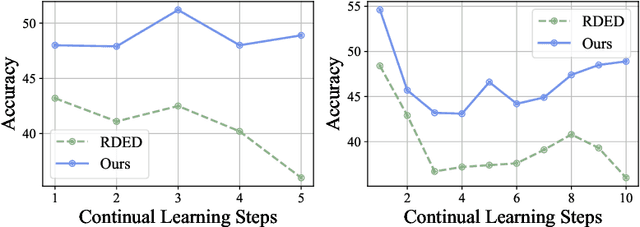
Abstract:Dataset distillation or condensation aims to condense a large-scale training dataset into a much smaller synthetic one such that the training performance of distilled and original sets on neural networks are similar. Although the number of training samples can be reduced substantially, current state-of-the-art methods heavily rely on enormous soft labels to achieve satisfactory performance. As a result, the required storage can be comparable even to original datasets, especially for large-scale ones. To solve this problem, instead of storing these heavy labels, we propose a novel label-lightening framework termed HeLlO aiming at effective image-to-label projectors, with which synthetic labels can be directly generated online from synthetic images. Specifically, to construct such projectors, we leverage prior knowledge in open-source foundation models, e.g., CLIP, and introduce a LoRA-like fine-tuning strategy to mitigate the gap between pre-trained and target distributions, so that original models for soft-label generation can be distilled into a group of low-rank matrices. Moreover, an effective image optimization method is proposed to further mitigate the potential error between the original and distilled label generators. Extensive experiments demonstrate that with only about 0.003% of the original storage required for a complete set of soft labels, we achieve comparable performance to current state-of-the-art dataset distillation methods on large-scale datasets. Our code will be available.
Improving Adversarial Robustness via Feature Pattern Consistency Constraint
Jun 13, 2024



Abstract:Convolutional Neural Networks (CNNs) are well-known for their vulnerability to adversarial attacks, posing significant security concerns. In response to these threats, various defense methods have emerged to bolster the model's robustness. However, most existing methods either focus on learning from adversarial perturbations, leading to overfitting to the adversarial examples, or aim to eliminate such perturbations during inference, inevitably increasing computational burdens. Conversely, clean training, which strengthens the model's robustness by relying solely on clean examples, can address the aforementioned issues. In this paper, we align with this methodological stream and enhance its generalizability to unknown adversarial examples. This enhancement is achieved by scrutinizing the behavior of latent features within the network. Recognizing that a correct prediction relies on the correctness of the latent feature's pattern, we introduce a novel and effective Feature Pattern Consistency Constraint (FPCC) method to reinforce the latent feature's capacity to maintain the correct feature pattern. Specifically, we propose Spatial-wise Feature Modification and Channel-wise Feature Selection to enhance latent features. Subsequently, we employ the Pattern Consistency Loss to constrain the similarity between the feature pattern of the latent features and the correct feature pattern. Our experiments demonstrate that the FPCC method empowers latent features to uphold correct feature patterns even in the face of adversarial examples, resulting in inherent adversarial robustness surpassing state-of-the-art models.
StyDeSty: Min-Max Stylization and Destylization for Single Domain Generalization
Jun 01, 2024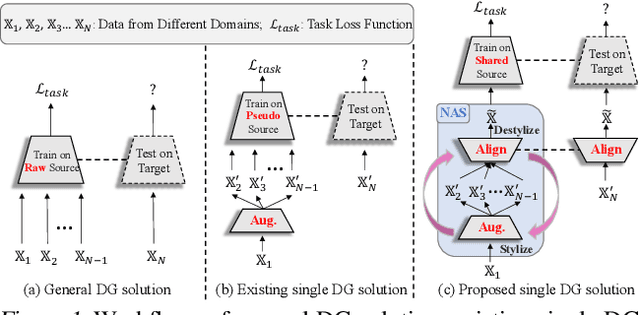
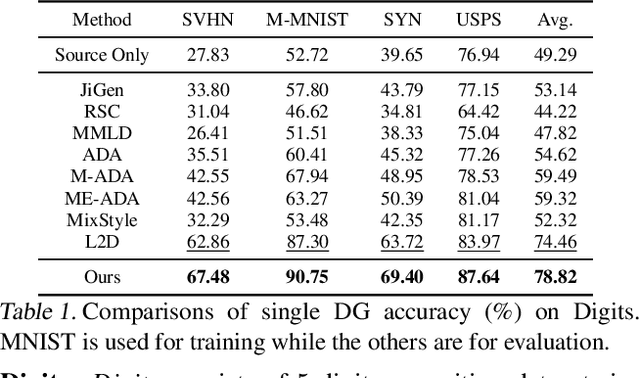
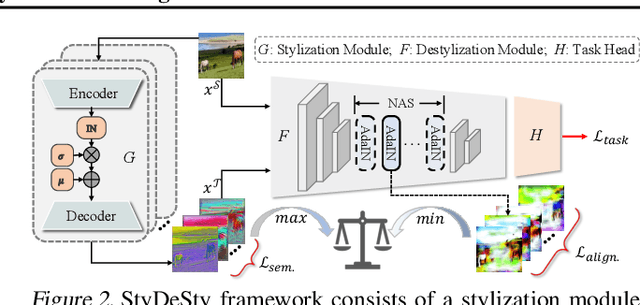
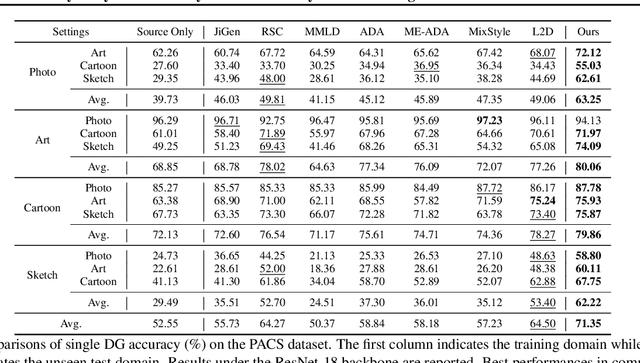
Abstract:Single domain generalization (single DG) aims at learning a robust model generalizable to unseen domains from only one training domain, making it a highly ambitious and challenging task. State-of-the-art approaches have mostly relied on data augmentations, such as adversarial perturbation and style enhancement, to synthesize new data and thus increase robustness. Nevertheless, they have largely overlooked the underlying coherence between the augmented domains, which in turn leads to inferior results in real-world scenarios. In this paper, we propose a simple yet effective scheme, termed as \emph{StyDeSty}, to explicitly account for the alignment of the source and pseudo domains in the process of data augmentation, enabling them to interact with each other in a self-consistent manner and further giving rise to a latent domain with strong generalization power. The heart of StyDeSty lies in the interaction between a \emph{stylization} module for generating novel stylized samples using the source domain, and a \emph{destylization} module for transferring stylized and source samples to a latent domain to learn content-invariant features. The stylization and destylization modules work adversarially and reinforce each other. During inference, the destylization module transforms the input sample with an arbitrary style shift to the latent domain, in which the downstream tasks are carried out. Specifically, the location of the destylization layer within the backbone network is determined by a dedicated neural architecture search (NAS) strategy. We evaluate StyDeSty on multiple benchmarks and demonstrate that it yields encouraging results, outperforming the state of the art by up to {13.44%} on classification accuracy. Codes are available here: https://github.com/Huage001/StyDeSty.
Distilled Datamodel with Reverse Gradient Matching
Apr 22, 2024

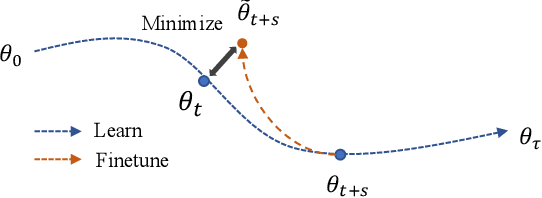
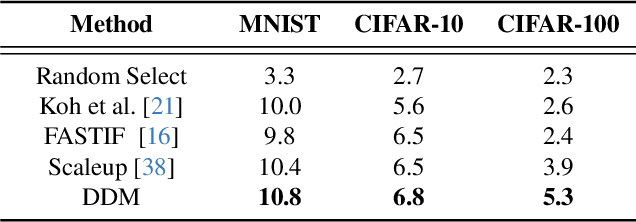
Abstract:The proliferation of large-scale AI models trained on extensive datasets has revolutionized machine learning. With these models taking on increasingly central roles in various applications, the need to understand their behavior and enhance interpretability has become paramount. To investigate the impact of changes in training data on a pre-trained model, a common approach is leave-one-out retraining. This entails systematically altering the training dataset by removing specific samples to observe resulting changes within the model. However, retraining the model for each altered dataset presents a significant computational challenge, given the need to perform this operation for every dataset variation. In this paper, we introduce an efficient framework for assessing data impact, comprising offline training and online evaluation stages. During the offline training phase, we approximate the influence of training data on the target model through a distilled synset, formulated as a reversed gradient matching problem. For online evaluation, we expedite the leave-one-out process using the synset, which is then utilized to compute the attribution matrix based on the evaluation objective. Experimental evaluations, including training data attribution and assessments of data quality, demonstrate that our proposed method achieves comparable model behavior evaluation while significantly speeding up the process compared to the direct retraining method.
Ungeneralizable Examples
Apr 22, 2024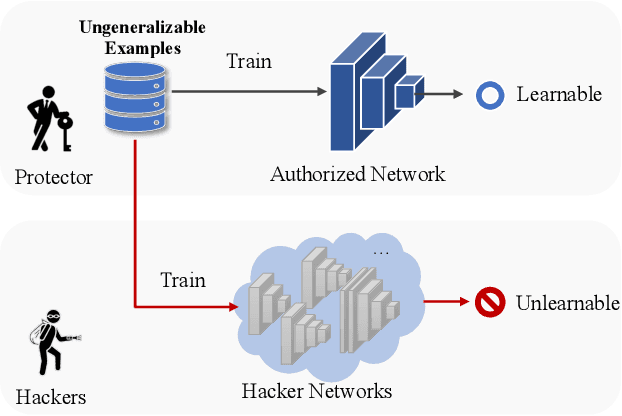
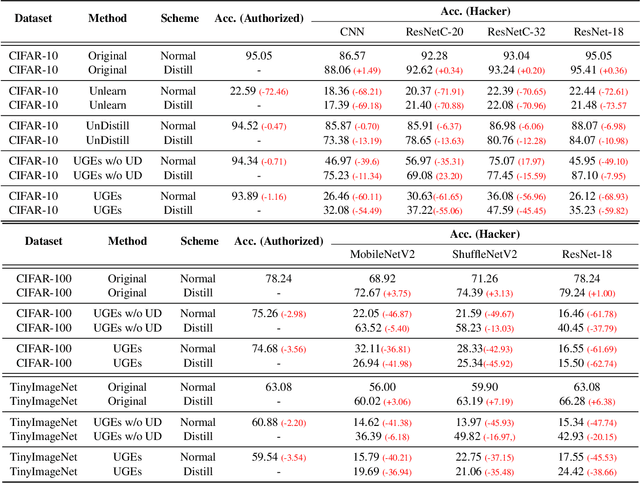

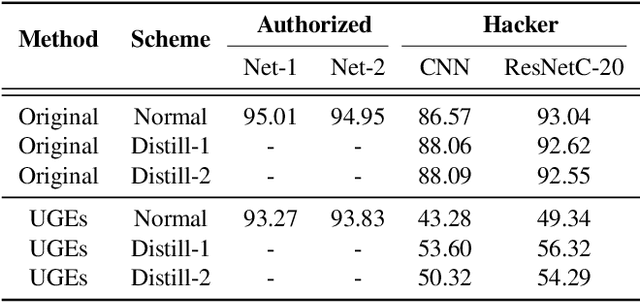
Abstract:The training of contemporary deep learning models heavily relies on publicly available data, posing a risk of unauthorized access to online data and raising concerns about data privacy. Current approaches to creating unlearnable data involve incorporating small, specially designed noises, but these methods strictly limit data usability, overlooking its potential usage in authorized scenarios. In this paper, we extend the concept of unlearnable data to conditional data learnability and introduce \textbf{U}n\textbf{G}eneralizable \textbf{E}xamples (UGEs). UGEs exhibit learnability for authorized users while maintaining unlearnability for potential hackers. The protector defines the authorized network and optimizes UGEs to match the gradients of the original data and its ungeneralizable version, ensuring learnability. To prevent unauthorized learning, UGEs are trained by maximizing a designated distance loss in a common feature space. Additionally, to further safeguard the authorized side from potential attacks, we introduce additional undistillation optimization. Experimental results on multiple datasets and various networks demonstrate that the proposed UGEs framework preserves data usability while reducing training performance on hacker networks, even under different types of attacks.
 Add to Chrome
Add to Chrome Add to Firefox
Add to Firefox Add to Edge
Add to Edge